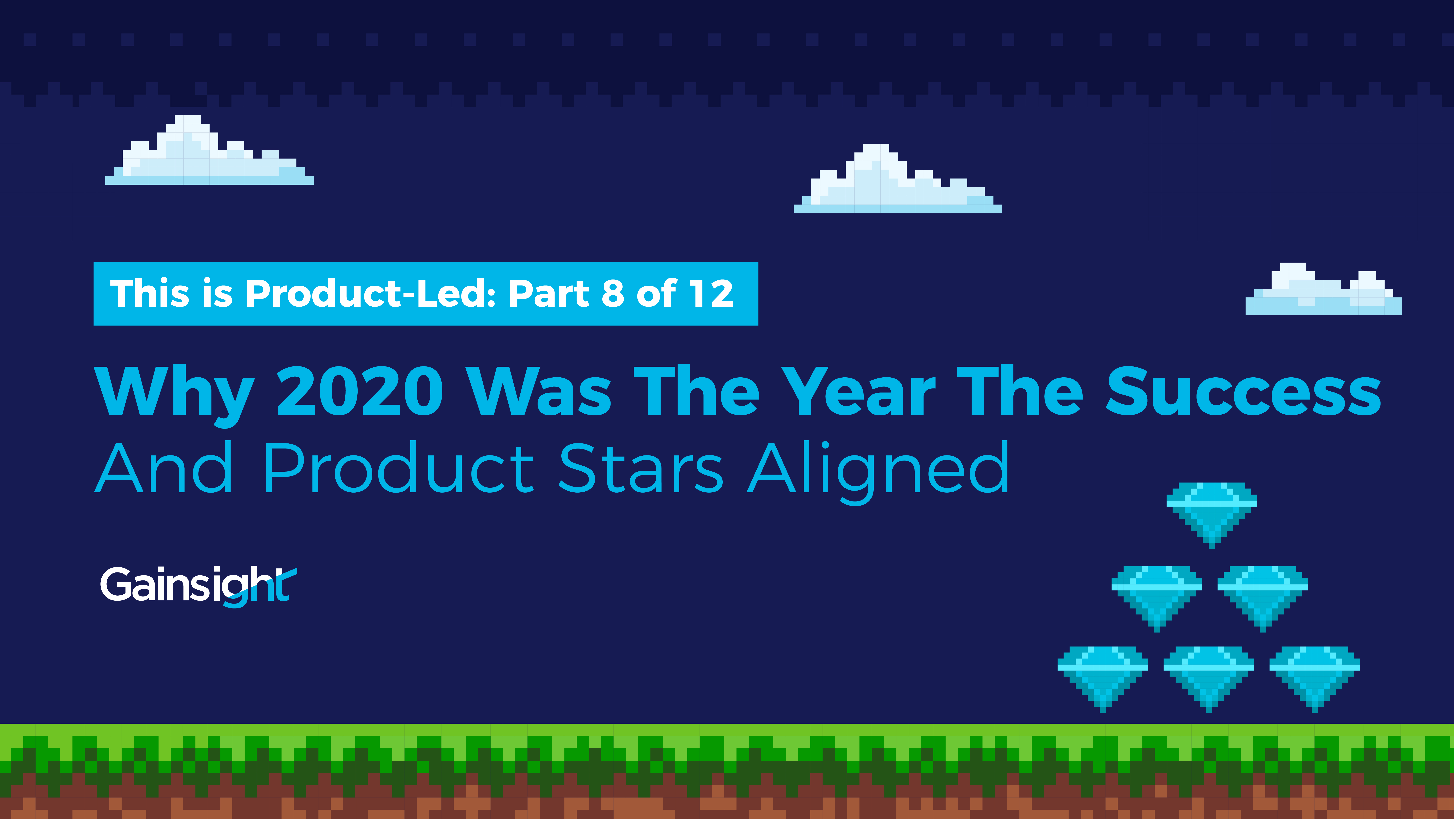This is part 8 of our 12-part series “This is Product-Led,” inspired by our conference for Gainsight PX users, Pulse for Product.
There is a feeling shared by professionals on both customer success and product teams: It is an ambient anxiety that some decision you’ve made could turn out wrong and upset clients.
“Sometimes customer success feels like the classic arcade game Frogger,” says Kevin Meeks, VP of Global Customer Success Management and Renewals at Splunk. “You can’t go too fast, you can’t go too slow, and you’re always waiting for that truck to come out of nowhere and knock you about.”
No surprise then that the two teams are bonding over shared experiences and growing closer. More and more, success and product teams are uniting to create in-product experiences that make both their lives easier.
Recently, we talked to Kevin Meeks of Splunk, Chiara Menesatti, Director of Product Management at Lifesize, and Neil James, COO of ReviewPro, to ask, “How is that bond going?”
The Success + Product Opportunity
As businesses move toward product-led growth, what happens inside the product no longer stays inside the product. Customers talk. They visit review sites and either sing praise or vent frustration, and word spreads. It matters now more than ever that the product solves their problem without too much involvement from customer success.
“Customers don’t buy products and they don’t buy customer success,” says Kevin. “They buy solutions for complex business problems. If product and customer success aren’t aligned to help them, it creates extra work for both teams.”
For Neil at ReviewPro, that evolution couldn’t be more natural, as he’s worked on both sides of the aisle. Before he was COO, he ran customer success, and before that, he was a product manager.
“For me, bringing those two together is a no-brainer. Feedback from customers must travel from the success team to product to ensure the application continues to evolve,” says Neil. “It’s the only way it remains cutting-edge.”
Chiara of Lifesize agrees, and thinks of it in terms of funnels. “Consider the relationship marketing teams have with sales. If they don’t do a quality job, and they fill the pipeline with junk, it makes it very difficult for sales to operate. It’s the same for product and success. If Product doesn’t put something very high quality out there, you pay for it in professional services and churn. A tight interlock is paramount.”
Yet at the same time, the two teams can’t be too close. Some professional distance is healthy.
“Product needs independence from customer success,” says Neil. “They need to be strategic, otherwise they get flooded with requests that crowd the pipeline.”
How to Get Them Playing the Same Game
The thing that unites the teams at Lifesize, ReviewPro, and Splunk? Product analytics. It’s a scalable way to sample both objective data—user flows, drop-offs, and confusion—as well as subjective data, like sentiment and reviews. It offers a complete picture of what’s happening in the product. That data fosters a healthy conversation.
Says Chiara, “I’ve been here 10 years now and one of the first things I learned as a product manager is that the product should always reflect the voice of the customer. It should solve problems, but also delight them. A lot of times, you only get those ideas for delight by talking to success.”
In other words, talking to success leads to success. For more on how Product and Customer Success teams work better together, check out our webinar here.
Level up your product strategy—Try Gainsight PX free]
